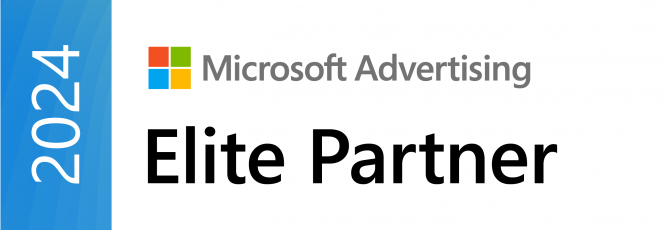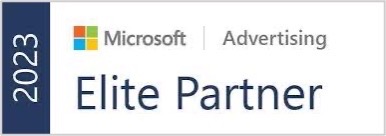
It’s time to start making the most of your Google Ads…
If you’re an online marketer or ecommerce business, chances are you’re already running Google Ad campaigns. However, there is more you can be doing to ensure your ads are performing optimally and bringing in that all-important revenue for your business.
There are several factors that go into determining how an advertiser ranks, and which advertiser gets placement on various platforms, such as Google search results. Oftentimes, you are not showing up in 100% of the searches that you would like to.
As leading providers of PPC management services, we have put together this useful guide to help Google Ads account managers improve their search impression share.
Before we get started, you should understand exactly what search impression share is. Google Ads impression share is a useful metric that tells you exactly what share of the targeted searches you are appearing in. Impression share is calculated by the following equation:
Impression Share = Total number of actual impressions / total number of eligible impressions you potentially could have appeared in
It’s important to note that impression share is calculated differently for each campaign you have, even if you have overlapping keywords.
In order to be successful, you want your impression share to be as high as possible. This is because a higher impression share means you are landing as many relevant placements as possible and creating more lucrative opportunities to connect with your target audience.
You must also keep in mind eligibility. This is based on your current ad targeting settings, approval statuses, bids, and Quality Scores.
Once you have created your Google ad campaigns, you will be able to go into the platform and see the impression share data showing in both your campaign manager and Google Analytics.
Your impression share varies from Very Low to Very High, as well as having an Average.
If you do not have impression share data set up as a metric in ads manager, you can quickly and easily set this up:
Not only is it important to set this up for insights into how your ads are performing, but it can also be used as a way of troubleshooting your ads and campaigns. For example, by enabling impression share data, you will be able to quickly and easily see how often you are losing impression shares, either due to low rank or budget.
Ad managers can be tempted to pause keywords that they believe are not performing well. However, there are steps you can take to increase their performance by utilising search impression share data, meaning pausing low-performing keywords can be a last resort.
Below are four of the top ways you can improve your Google Ads search impression share:
As mentioned above, enabling impression share data on analytics can help with troubleshooting your ads and campaigns. It will clearly display the impressions you are getting in green. In addition to this, it will inform you of lost impressions due to low ad rank in yellow, and impressions you are missing due to ad budget in blue.
With this information, you can unlock crucial information into what you need to do to increase your impression share on Google and improve your PPC campaigns.
Once you have reviewed your ads, you may notice that you are missing out on impressions due to a low ad rank. If this is the case, your Google Ads quality score may be too low, or your bid on that target keyword is too low. To calculate your rank, you should do the following:
Quality score x Maximum CPC Bid
If either of these metrics are too low, it will result in a lower ad rank. For example, if you are ranking at position 6 and the search is only showing three results, you will have lost the placement.
From here, you have two options: raise your quality score or increase your bid. To raise your quality score, you must ensure that your ads are relevant to the target keywords and the landing page you are sending your users to. By making sure these are aligned, your rank will increase.
Increasing your bids is linked to increasing your overall budget. For example, if you are losing out on impression shares on a high-converting campaign simply due to budget, you should consider increasing this budget to accommodate for more results.
If your monthly PPC budget does not allow for any increase, you can try reducing your bids on certain target keywords. As a result, your CPC will decrease, and you may get more clicks for the same budget.
Please be aware that this can come with a risk, as you may potentially fall in ad ranking. If you do decide to test this option, we recommend keeping a close eye on your campaign to ensure you are not dropping too low.
Finally, we recommend performing some keyword research. Each individual keyword you are targeting varies in CPCs and ranks, providing unique opportunities for your business to target its audience.
To help you with this process, you can take advantage of Google Keyword Planner. This useful tool informs you of monthly search volume and estimated CPC per keyword, allowing you to make more informed choices about the keywords you wish to target.
Look at your keywords and highlight the ones that are performing well for a reasonable budget, and the ones that are bringing in the lowest conversion rates. From here, consider eliminating low-performing keywords and investing more in high-performing keywords.
When your ads are not performing in the way you would like them to, often reviewing impression share is not at the top of the list of tangible data to focus on. However, there is plenty of hidden potential that can be harnessed.
Contact the team at Diginius today to find out how we can improve your impression share and increase your conversion rates to help your business excel online. Alternatively, we offer a Google Ads training course that offers insightful information and useful tips and tricks that you can apply directly to your ad campaigns.







© 2024 Diginius Ltd. All rights reserved.

Chester Yang is the Microsoft Program Manager at Diginius with a background in economics and quantitative research.
At Diginius, Chester focuses on nurturing partnerships with PPC agencies and integrating marketing and sales solutions.